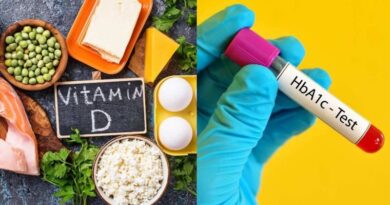Superfoods for Diabetes Myths and Facts

The term “superfood” often pops up on social media, food packaging, and in ads, typically to highlight a food’s supposed extra health benefits. Although the Food and Drug Administration (FDA) does not officially define “superfood,” they do regulate health claims on food labels to ensure scientific backing.
However, the following list of “superfood” is packed with protein, healthy fats, vitamins, minerals, antioxidants, and fiber. These foods not only promote overall health but may also help in preventing diseases like diabetes.
Powerhouse Non-Starchy Vegetables
According to the Diabetes Plate Method, non-starchy vegetables should take up half of your plate.
Dark Green Leafy Vegetables
These vegetables are rich in vitamins A, C, K, and folate, along with iron, calcium, and potassium. They are low in calories and carbohydrates, making them a perfect fit for the non-starchy section of your plate. Incorporate leafy greens like spinach, collards, and kale into salads, soups, and stews for a nutritional boost.
Recipe Ideas:
- Garlic Sautéed Spinach and Kale
- Southern Collard Greens
- Spinach Yogurt Dip
Avocado
Avocados are a nutrient-dense food that provides fat-soluble vitamins and fiber, helping you feel full and satisfied. They offer a heart-healthy fat source for your Diabetes Plate and are incredibly versatile.
Recipe Ideas:
- Avocado Toast with Turkey Bacon and Tomato
- Avocado Tuna Salad
- Avocado Strawberry Salad
Protein Powerhouses
The Diabetes Plate suggests that protein should occupy a quarter of your plate.

Beans, Peas, & Legumes
These plant-based proteins are rich in fiber, folate, potassium, iron, and zinc. Beans like kidney, pinto, navy, and black beans, along with legumes such as chickpeas, split peas, and lentils, offer numerous nutritional benefits. While they contain carbohydrates, a half-cup serving provides as much protein as an ounce of meat, but without the saturated fat. To reduce added salt, rinse canned beans, or opt for dried beans to personalize with your own flavors.
Recipe Ideas:
- Basic Bean Burger
- Parsley Lemon Chickpea Salad
- Lentils and Greens with Apples
Fish High in Omega-3 Fatty Acids
Omega-3 fatty acids may lower the risk of heart disease and reduce inflammation. Fatty fish like salmon, herring, sardines, mackerel, trout, and albacore tuna are excellent sources. Opt for broiled, baked, or grilled fish to avoid extra carbohydrates and calories from breaded or fried preparations. Eating fatty fish at least twice a week is recommended.
Recipe Ideas:
- Salmon and Rice Bowls
- Grilled Trout with Fresh Herbs
- Grilled Teriyaki Tuna
Nuts
A small serving of nuts provides healthy fats, magnesium, and fiber, helping to curb hunger. Certain nuts and seeds, like walnuts and flax seeds, are also good sources of omega-3 fatty acids. Roasting and seasoning your own nuts can reduce added sodium.
Recipe Ideas:
- Toasted Nut Cranberry Trail Mix
- Apple Walnut Salad
- Lemon Raspberry Chia Seed Pudding
Star Carbohydrate Foods
According to the Diabetes Plate, carbohydrate foods should fill one-quarter of your plate.

Berries
Berries are loaded with antioxidants, vitamins C and K, manganese, potassium, and fiber. Naturally sweet, they are an excellent way to satisfy your sweet cravings without added sugars.
Recipe Ideas:
- Berry Salsa
- Berries and Cream
- Blueberry Almond Chicken Lettuce Wraps
Citrus Fruits
Citrus fruits are well-known for their vitamin C content, but they also offer fiber, folate, and potassium. Whole fruits like grapefruits, oranges, lemons, and limes provide more benefits, including fiber, than their juice counterparts.
Recipe Ideas:
- Broccoli and Mandarin Orange Salad
- Brussels Sprouts with Oranges
- Winter Salad with Citrus
Whole Grains
Whole grains are packed with B vitamins, magnesium, iron, and manganese, and are a fantastic fiber source. Look for products where “whole” is the first ingredient. Examples include whole oats, quinoa, barley, farro, and whole wheat.
Recipe Ideas:
- Cilantro Lime Quinoa
- Savory Mediterranean Oats
- Asian Edamame and Brown Rice Salad
Milk and Yogurt
Milk and yogurt are known for their calcium content, crucial for strong bones and teeth. Many of these products are fortified with vitamin D, which is increasingly linked to overall health. Since milk and yogurt contain carbohydrates, plan accordingly when managing diabetes. Choose low-fat, low-sugar options, and consider adding natural sweetness with berries and walnuts.
Recipe Ideas:
- Blueberry Lemon Yogurt Parfait
- Savory Tzatziki-Style Greek Yogurt
- Cheddar Cheese and Broccoli Soup
Shopping for Healthy Foods on a Budget
Eating well doesn’t have to break the bank. Shop at local markets for in-season or discounted produce. Frozen, canned, or dried fruits and vegetables are also great choices—just opt for those without added sugar or sauces. Rinsing canned vegetables can reduce sodium. Choose frozen or canned fish and lower-sodium nuts. Dry beans, legumes, and whole grains cooked from scratch are budget-friendly and can be tailored to your taste.



